Vol. 4. Nikon F2
The Story of the Nikon F2
My last article was rather long, but I felt it was important to try and relate — in my own style — some of the previously untold stories surrounding the birth of the Nikon F3.
This time, we will take yet another step back. I've not had much of an opportunity to discuss the Nikon F2, and would like to do so now.
You may agree with my impressions of the Nikon F2, or you may discover something you didn't know which will forever change your opinion of this camera.
The Origin of the F Series
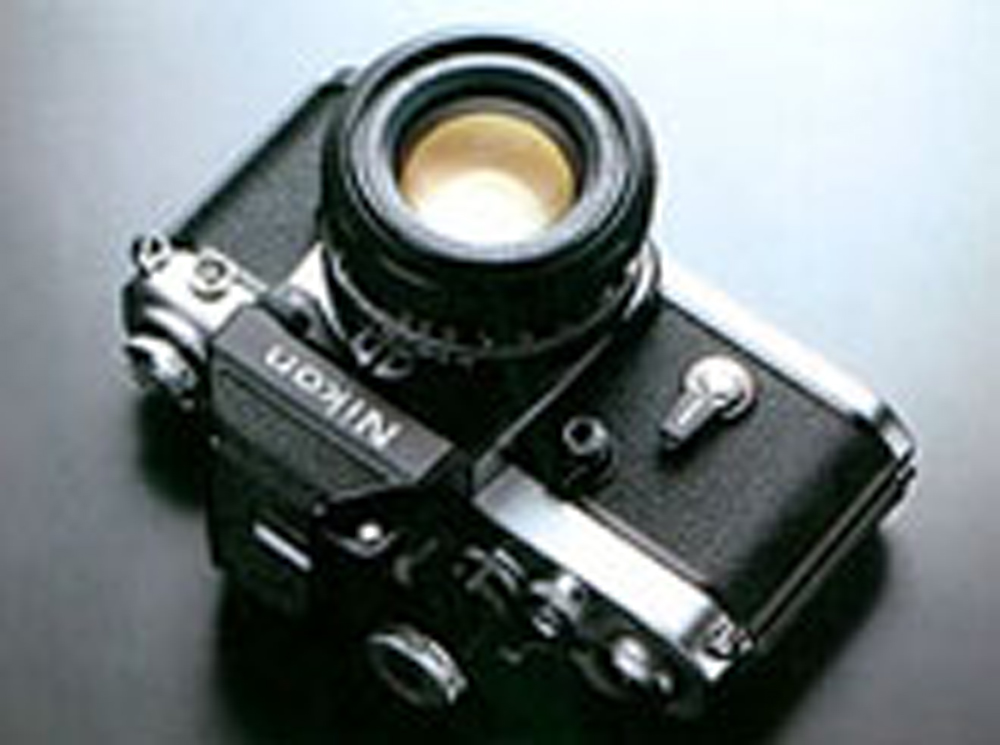
When the Nikon F was first introduced in 1959, it was recognized as the most advanced single lens reflex (SLR) camera to date. In terms of popularity, however, it trailed later models by a wide margin.
This may have been attributable to a high retail price when compared with other SLRs.
As time passed, though, more people experienced firsthand the camera's high level of performance and the accolades began rolling in.
The Nikon F became a "legend".
The dramatic rise in popularity can be traced primarily to two of the camera's characteristics — high reliability and multiple functions.
No comparable camera even came close to the rugged body, extensive lineup of interchangeable lenses and wide variety of accessories that the Nikon F had to offer.
By 1959, we'd entered a new era for 35mm (135) format SLR cameras.
Revolutionary mechanisms and technologies came one after another. The old-fashioned mechanism of the Nikon F stood out in this time of significant advancement.
The New, Old Nikon F

As you read you may be reminded of an inconveniently located shutter release button, or a film-advance lever that made your fingers hurt.
Technically speaking, though, these problems required only minor adjustments to remedy.
There were more fundamental features of the camera that had become outdated — the existence of two operating routes in one camera, the positioning of the mirror, and the shutter's charging and driving mechanism.
How did these problems actually affect picture-taking ?
In layman's terms, they were a negative influence on focusing and the accuracy of the shutter.
Most of these troubles were taken care of prior to release — proof of Nippon Kogaku K.K.'s considerable manufacturing skills and advanced technology.
The quality of the camera at release was extremely high.
The product concept and its system compatibility were considered cutting edge at the time, but its extended popularity caused it to eventually be regarded as old fashioned.
In 1963, a few years after the release of the Nikon F, engineers began work on prototypes of next-generation cameras.
They concentrated on the reconstruction of the shutter's operating parts to increase the speed of shutter curtain movements, exercised more care in the pairing of mirror and shutter, and in some cases built an exposure meter into the camera body for increased metering accuracy.
Following extensive discussion and work on the incorporation of new features and technologies, the engineers began developing the "New" F Series.
The Heir to Nikon F's Throne
As I mentioned earlier, the Nikon F received high marks from experts in the field.
However, as it was very advanced for its time, problems that might otherwise have been considered minor were highlighted.
Ergonomic issues such as the corners of the camera body making operation less than comfortable, and a whole slew of technical shortcomings : the lack of a way to remind users to cancel film rewind after rewinding is completed ; the inability to securely attach finders (including Photomic finders) ; an inconvenient method of attachment for the motor drive; the excessive darkening of the upper portion of the finder's viewfield when using a telephoto lens, and a number of others.
The new camera was supposed to answer customer demands — in other words, to solve every existing problem discovered in the Nikon F.
The engineers were tasked with the redesign of internal mechanisms.
This was back in the spring of 1968.
After nine years on the market, only 300 thousands units of the Nikon F had been sold. This represented a grand total of one-third of the entire inventory.
Given this, Nippon Kogaku K.K. could not possibly have forecast what was to come.
The Nikkormat (Nikomart), with the catch phrase "TTL metering + Nikkor lens", had become the successor to the FTN model and had achieved a high degree of popularity.
The success of the Nikkormat paved the way for the Nikon F.
Some people would say that using the word "if" when discussing the past is rather a silly thing to do.
At the risk of derision, I'd like to do just that. "If" the Nikon F had been an instant hit, development of its successor would certainly have taken place later than it did.
Going a step further, "if" development had been pushed back, the features would have been more advanced.
The F2 may have turned out to be an AE camera featuring an electronically controlled shutter, the Nikon F3 might have become a manual focus camera with a built-in motor drive, and the Nikon F4 would now be ...... well, it would be the current Nikon F5.
"A" model

This model was originally referred to as "F’" during its course of development, but it was later renamed to "A".
The "A" model was supposed to represent the correction of every problem with the Nikon F.
Incorporating the popular Nikon motor drive system, along with TTL metering, the "A" was also designed to offer an overall increase in quality.
The plans for the "A" further included the adoption of a multiple exposure system and a shutter speed of 1/2000 of a sec. — not part of the Nikon F.
The "A" was to be an "easier-to-use, but tougher" version of the Nikon F.
After careful review of the basic design while bearing the above concept in mind, it was determined that a design plan based on the Nikon F was not going to fly — the design had to be completely redone.
It was from this point that the lessons learned after the release of the Nikon F would finally begin to take effect.
Until this point, each of Nikon's cameras — from the Nikon M to the "F" — had been revised versions of their predecessors.
This was the first time since the Nikon I that they'd been required to formulate an entirely new design.
It was not the last, however, as the F3, F4 and F5 all resulted from original designs.
The body of the "A" contained many unique ideas — the shutter's charging mechanism, the release mechanism, the construction of the driving spring cylinder, and more.
These new features were not at all influenced by the old Leica.
Through the use of titanium (Ti) in the reflex mirror frame, the mirror — which caused virtually no finder vignetting — could be driven faster than with the Nikon F.
The engineers were determined to make the "A" the ideal camera in terms of mechanics.
Furthermore, the application of the most advanced technology available accelerated the camera's operation overall.
Reliability was high, but it took some time to achieve an acceptable degree of durability.
The Motor Drive Revolution
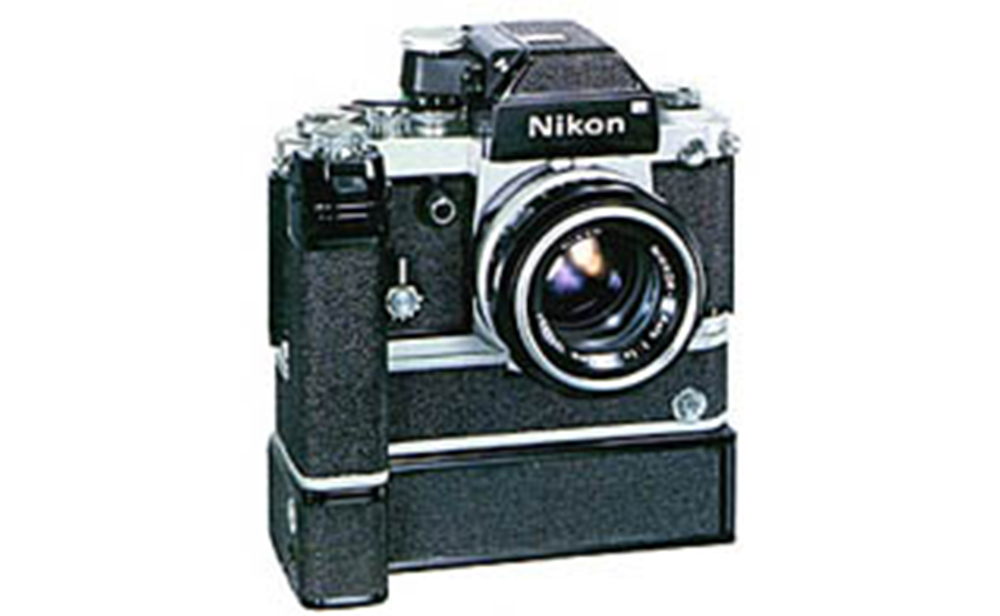
We seem to have veered slightly off the topic.
Returning now to the discussion of the Nikon F ....... another aspect of this camera that was held in high regard was the motor drive.
This was probably the feature that put the Nikon F ahead of its contemporaries.
The combination of the Motor drive F36 and the direct-connecting battery case truly represented the dawning of the motor drive era in photography.
The motor drive gained worldwide popularity due to its mobility.
Later, the noise it created would become a problem ; nonetheless, the motor drive was established as a symbol of high class among more experienced users.
The F36, along with the 250-frame motor drive F250, were employed in the maintenance of scientific records, as well as in a number of different industries.
The powers that be decided that, for the "A", a motor drive that performed at a higher level and simplified operation was necessary. It would be designed exclusively for the "A" model.
Among its new features were quicker film advance (five(5) frames / sec., up from four(4)), electronic film rewind and auto frame counter reset.
A feature of the "A" that stood out was the hole in the bottom of the camera to enable motor-driven rewind.
At that time, Japanese film manufacturers had begun to make a film rewind key of the cartridge on the opposite side of the cartridge from the conventional key.
Once famous overseas manufacturers followed suit, the hole was incorporated in the design of the "A".
Development of the A-36 and the A-250 began — six(6) months late, but it did indeed get underway.
Family Resemblance
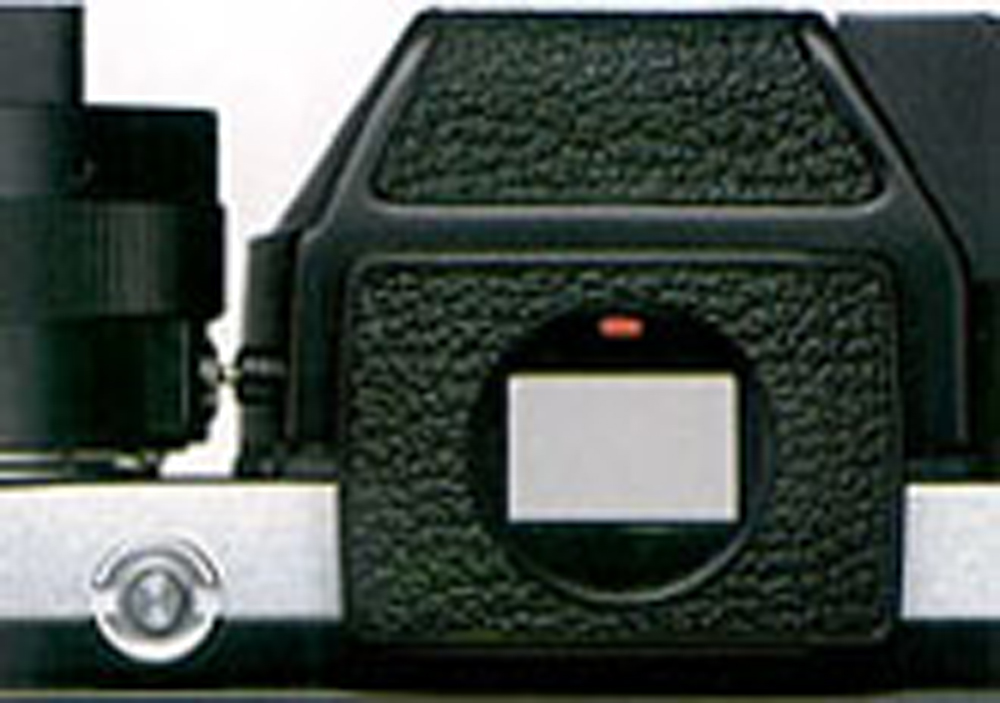
The biggest similarity between the Nikon F and the F2 was most likely the finder composition.
The Nikon F's interchangeable finder enabled it to incorporate TTL metering later.
With the Photomic TN finder, the metering became center-weighted.
And, just as the Nikkormat (Nikomart), it functioned as an exposure meter, and was very well received.
It did not employ body metering, but rather a system of metering using interchangeable finders.
Other minor improvements were also being made, such as a new method of attaching the finder, employing a film advance switch to ensure that the exposure meter isn't left on inadvertently, and the addition of an eyepiece with a built-in ready light.
As High as Technology Gets
The development of the "A" overlapped the development of a camera for NASA's Apollo and Skylab.
As such, in the "A" — particularly in its motor drive — we can see some features adopted from the camera designed for NASA.
One example is the use of a transistor in the NASA camera's motor drive relay, done in order to prevent the creation of sparks aboard the spacecraft.
This feature can also be found in the "A".
In addition to technological improvements, design and operational aspects of the "A" were upgraded.
NASA's camera had a film advance lever large enough to be operated by an astronaut wearing gloves.
This was the inspiration for the wide finger area on the "A" model's film advance lever.
Furthermore, the body of the "A" was curved to better fit in the hands of the user — in contrast to the sharp lines of the Nikon F2.
New Stage in Production Process
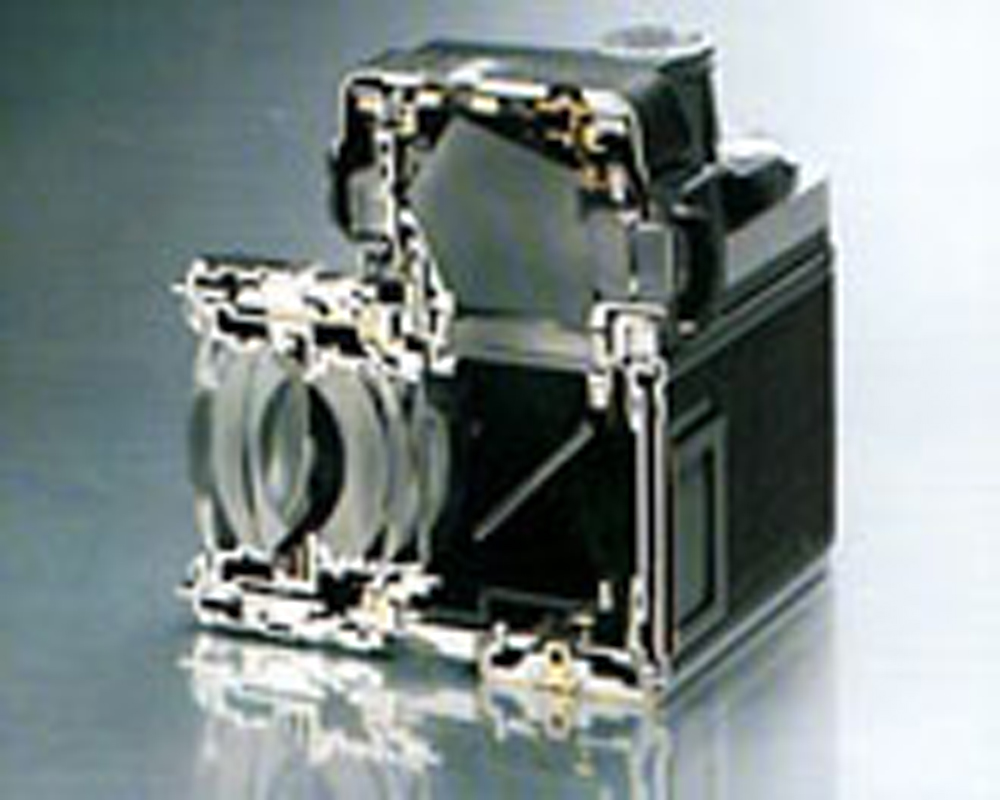
The development of the successor to the Nikon F was a significant event for Nippon Kogaku K. K..
Proof that they themselves recognized this is evident in their addition of a step to the pre-production process.
Following the test model, they made a pre-production test model using the same parts and procedures as are employed during actual production.
This provided them with a better overall understanding of the camera prior to release.
The first pre-production model was made in March of 1969. It was labeled the "UF-1" and 20 of them were produced.
Several more models were made, and the manufacturing process was improved and the camera design refined along the way.
The pre-production model became a standard step in the process when it was employed prior to mass production of the next model, the Nikkormat (Nikomart) EL.
After "F" Comes...... "G" !?
Most journalists assumed that the successor to the long-selling Nikon F would be called the "Nikon G".
The use of numeric suffixes would make it easy to recognize the model change, but it was thought that this might leave the impression that not much had changed from the preceding model.
However, after careful consideration, Nippon Kogaku K. K. opted for a conventional name change, to "F2".
If the F2 had been named "G", then the F3 would have been "H", the F4 would have been called "J", and the F5 would be named "K".
Perhaps you can understand why "I" was skipped.
By the way, is this writer the only one who believes that "F2" was the best choice ?
Nikon F2 - A Piece of Work
The release and the sales of the Nikon F2 on September 21, 1971, drew a great deal of attention.
The most popular aspects of the new camera were its completely new control system and the enhanced motor drive. Later, the Photomic S finder and the EE control unit were developed.
These features enabled metering and auto exposure in low-light situations, greatly enhancing the F2's overall functionality.
From a more critical standpoint, the F2 seemed to represent a very conservative change. It appeared to be nothing more than a "curved F".
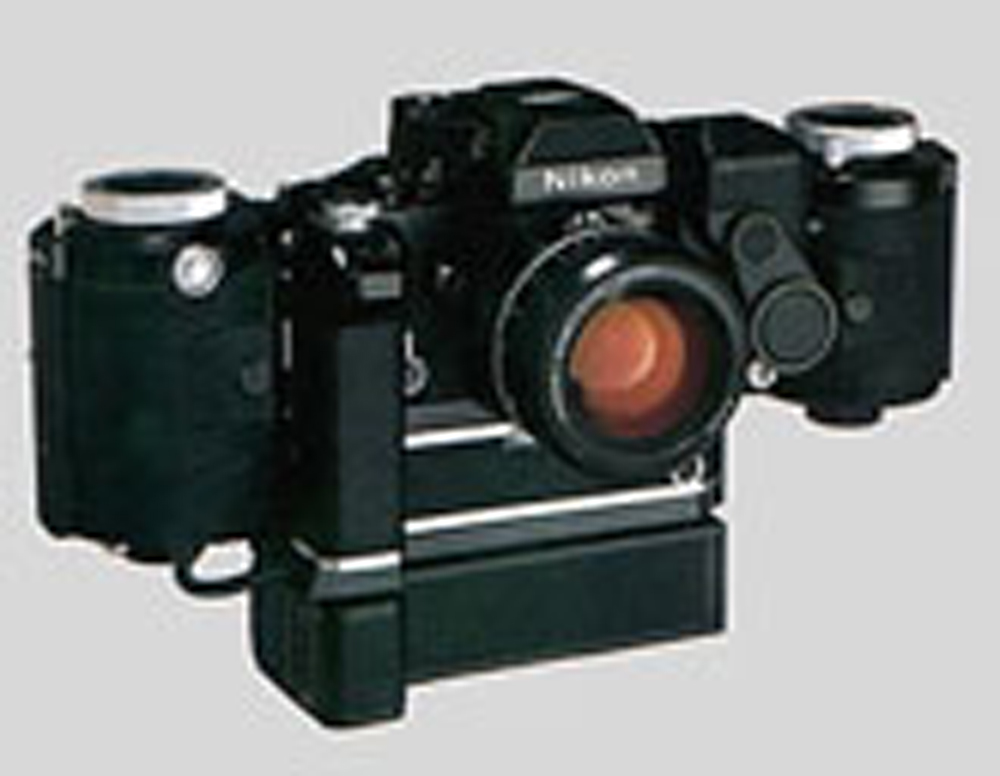
+ MD-2 + 250 filmback
+ EE control unit DS-12
During the development of the F2, Nippon Kogaku K. K. 's motto was "quicker and stronger".
This seemed to symbolize the 1970s, as everything from society to technology was growing at a staggering pace.
The production of the F2 in the following month exceeded that of the Nikon F during the same relative period, and the F2 is still in use worldwide.
Unfortunately, the F2 lost some of its appeal once the photography world learned of the electronic shutter.
Mechanical cameras today are not relegated to display duty or looked at merely as collector's items — they are still put to good use by photographers worldwide.
As mechanical cameras go, the F2 is regarded as the most efficient and powerful SLR camera.
Perhaps the most accurate evaluation of this huge project from the past is a recounting of its own history.
Note
This issue first appeared in "Nikkor Club Quarterly" magazine , published by the Nikkor Club, and was revised for Nikon's webpage.
Products, brands and companies names are trademarks or registered trademarks of their respective companies.
Camera Chronicle
Archives of corporate history subject matter related to Nikon cameras, including rare materials, as well as product photos of cameras and lenses.
